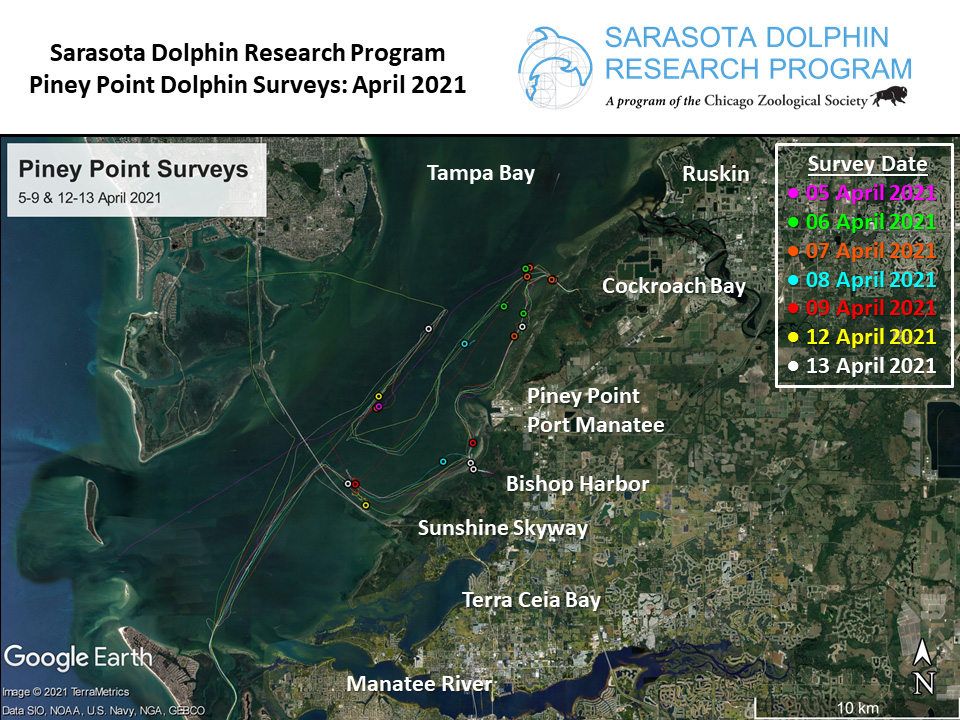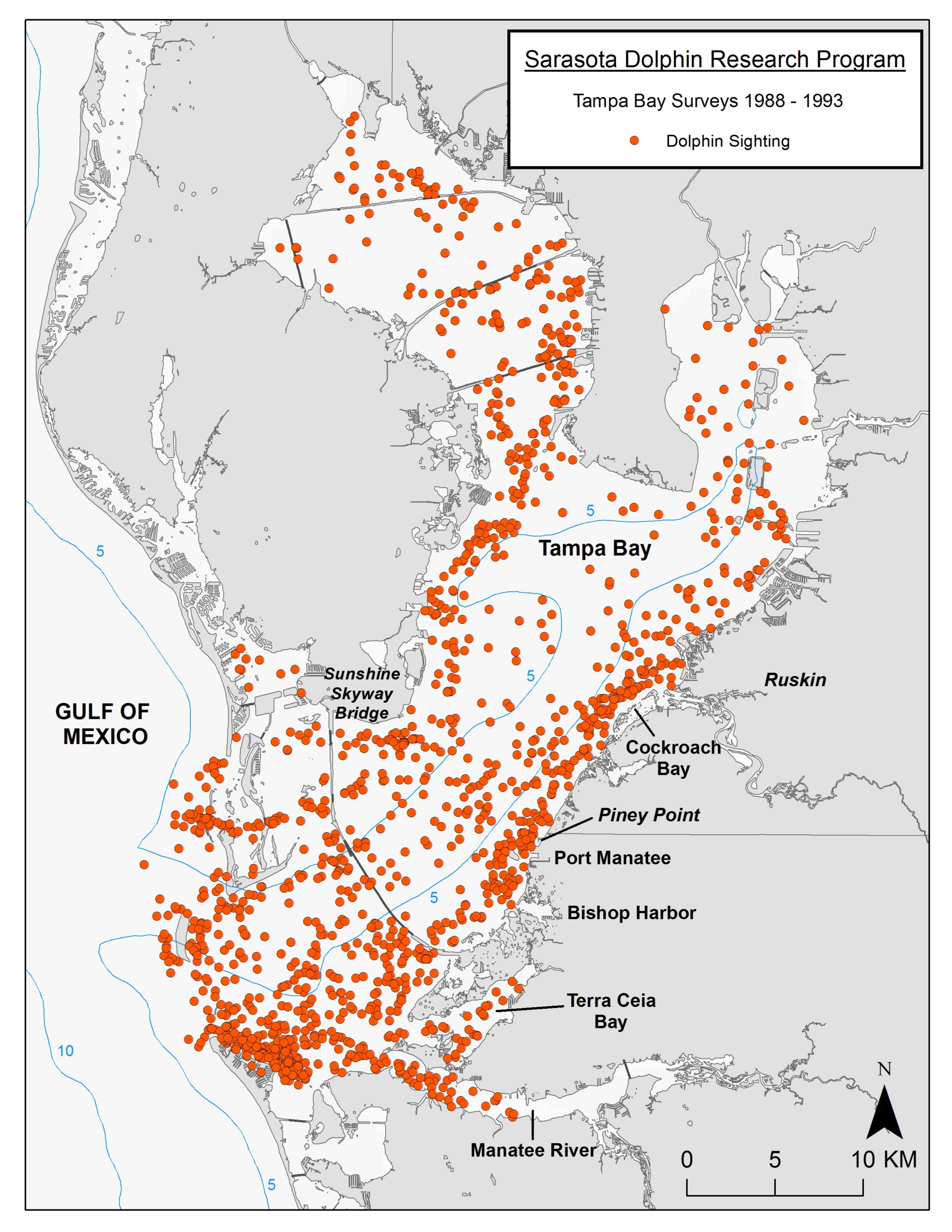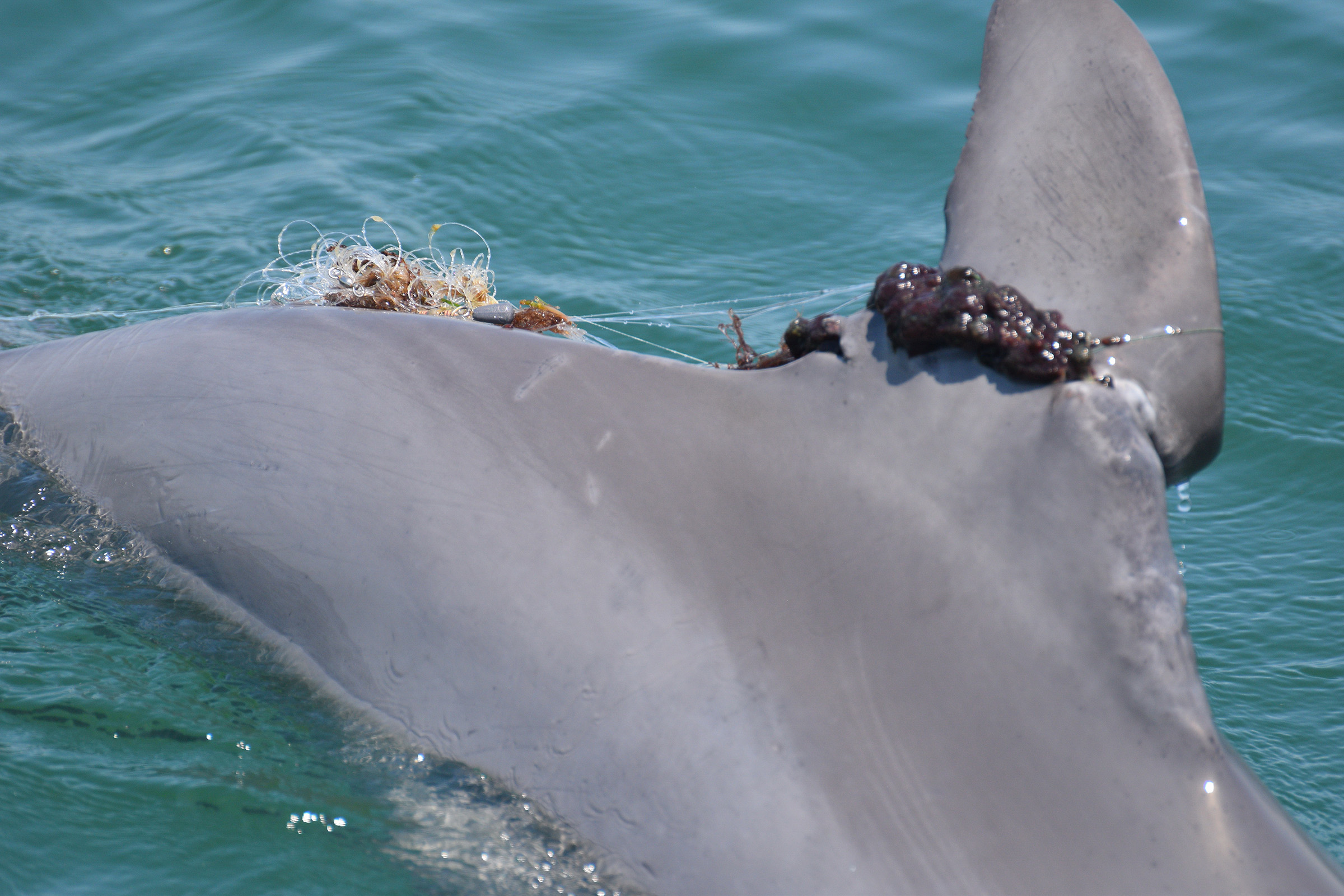Monitoring the Dolphins at Piney Point

The Background
In April 2021, a breach occurred in the wall of a reservoir at Piney Point, an abandoned fertilizer plant located in Manatee County, Florida, near the coastline of lower Tampa Bay. The plant is located in an environmentally sensitive area, near aquatic preserves at Bishop Harbor and Terra Ceia Bay. The breach led to the release of more than 215 million gallons of polluted water into Tampa Bay.
The National Oceanic and Atmospheric Administration (NOAA) — the agency responsible for enforcing the Marine Mammal Protection Act and protecting wild dolphins — encouraged us to extend our regular Sarasota Bay dolphin-monitoring program to include the community of dolphins closest to the Piney Point discharge site.
As a group long-dedicated to monitoring the health and conservation status of wild dolphin populations, we wanted to help even though NOAA is currently unable to provide funding for this monitoring work.
What We’re Doing
We began monitoring the dolphin population at Piney Point on April 5, 2021.
During April 5-13, 2021, we conducted seven photographic identification surveys through the waters off Piney Point to try to assess dolphin distribution, relative abundance, and the conditions of the dolphins.
These surveys involved operating a small vessel on a set survey route, having trained observers search for dolphins, and documenting all sightings through observations and photographs of dolphin dorsal fins for identification purposes, and of their bodies for evidence of lesions or discolorations (Wells 2009, 2018).

Survey routes and sighting locations for dolphin photographic identification surveys conducted by the Chicago Zoological Society’s Sarasota Dolphin Research Program during April 5-13, 2021. Lines and dot colors refer to routes and sighting locations for specific days.
The area surveyed included the waters from the Sunshine Skyway, northward to Cockroach Bay, and from shore to the ship channel. This region is the center portion of the home range of a resident community of dolphins identified by Urian et al. (2009), a community that ranges from the Manatee River to Ruskin. This is the next community to the north of, and adjacent to, the resident Sarasota Bay community (Wells 2014).
Findings from our initial surveys should be considered very preliminary – more work is needed before conclusions can be drawn. Our initial surveys suggest that the density of dolphins in the vicinity of the discharge site at Piney Point is less than that farther away from the site, with more sightings clustered at the northern extent of our surveys, off Cockroach Bay (see map above). Gross comparisons with sighting data from surveys conducted by the SDRP during 1988-1993 (Wells et al. 1996) also suggest a possible change in dolphin distributions.
The map to the right shows all of the sightings during the 1988-1993 Tampa Bay photographic identification surveys, showing what appears to be a fairly even distribution of sightings through the southeast coastal waters of Tampa Bay, unlike what we have seen in recent surveys. However, we do not have any more recent baseline distribution data than 1993, and we do not know if any changes have occurred between 1993 and 2021.
We do know that at least some of the long-term residents of this dolphin community still use the previously defined community range. Several individuals first identified from as far back as 1984 and the 1990s have been documented in our recent surveys. Quantitative analyses of dolphin distributions and abundance remain to be completed.
So far, no obvious indications of health issues have been observed with dolphins in the vicinity of the discharge.

This map shows sightings from Tampa Bay photographic identification surveys conducted by the Sarasota Dolphin Research Program during 1988-1993 (Wells et al. 1996).
What’s Next
We plan to continue surveys as conditions warrant, and extend the surveys beyond the initial routes to assess whether some of the dolphins expected to be off Piney Point have shifted to using other waters in Tampa Bay. We will post updates as we have them on this page.
As a group long-dedicated to monitoring the health and conservation status of wild dolphin populations, we wanted to help monitor the Piney Point dolphins, despite a lack of dedicated funding to conduct the work.
Fortunately, we’ve been able to receive approval from one of the main funders of our Sarasota Bay dolphin monitoring program — the Charles and Margery Barancik Foundation — to temporarily shift some of the funding we receive to be able to accommodate an increase in the range of our study area. We are also working to identify other funding sources to support this work. If you’d like to support our Piney Point dolphin monitoring, please make a donation today. Thank you!





